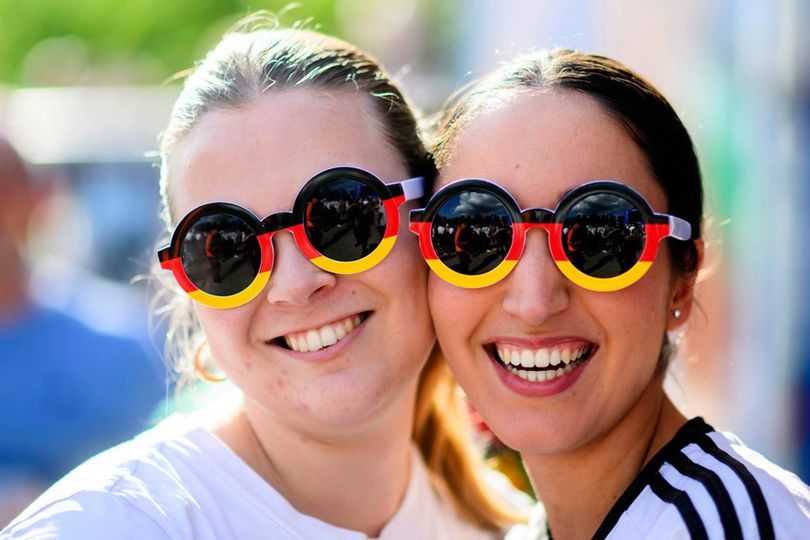Historical Context

Germany vs denmark – Germany and Denmark share a long and complex history, marked by both cooperation and conflict. Their geographical proximity has had a significant impact on their relationship, leading to both cooperation and competition.
The tense match between Germany and Denmark held the world’s attention, with both teams battling fiercely for supremacy. Amidst the thrilling clash, the name Exequiel Palacios emerged as a shining star, showcasing his exceptional skills on the field. As the game reached its climax, Germany managed to secure a narrow victory, but the brilliance of Palacios left an unforgettable mark on the hearts of football enthusiasts, reminding us that even in the midst of fierce competition, individual talent can transcend boundaries.
Political Systems
Throughout history, Germany and Denmark have had different political systems. Germany has experienced a variety of political systems, including the Holy Roman Empire, the German Confederation, the German Empire, the Weimar Republic, and the Federal Republic of Germany. Denmark, on the other hand, has been a constitutional monarchy since the 19th century.
The intensity of Germany vs Denmark left us craving more football action. For those seeking an equally thrilling match, tune into the argentina vs peru free live stream. While the South American giants clash on the field, we eagerly await the resumption of Germany vs Denmark, where the battle for supremacy continues.
Economic Systems
Germany and Denmark have also had different economic systems. Germany has been a major economic power for centuries, with a strong industrial base. Denmark, on the other hand, has traditionally been an agricultural country, but has developed a strong service sector in recent decades.
Conflicts
Germany and Denmark have been involved in several conflicts throughout history. The most notable conflict was the Second Schleswig War (1864), in which Prussia and Austria defeated Denmark and annexed the duchies of Schleswig and Holstein.
Cultural Comparison
Germany and Denmark, neighboring countries in Northern Europe, share a rich cultural heritage and geographical proximity. However, their distinct histories, traditions, and social norms have shaped unique cultural identities.
Both German and Danish cultures are deeply rooted in their respective languages. German, a Germanic language, is characterized by its complex grammar and rich vocabulary, while Danish, a Scandinavian language, is known for its simplicity and melodic pronunciation.
Customs and Traditions
Customs and traditions play a significant role in shaping the cultural fabric of both countries. In Germany, punctuality, order, and efficiency are highly valued. Germans often adhere to strict schedules and place emphasis on formality in social interactions. In contrast, Danish culture embraces a more relaxed and informal approach. Danes prioritize “hygge,” a concept that translates to coziness and contentment, and they value a work-life balance.
Social Norms and Values
Social norms and values also differ between Germany and Denmark. Germans tend to be more reserved and private, while Danes are generally more open and outgoing. In Germany, individualism is respected, and personal space is highly valued. Danes, on the other hand, place a strong emphasis on community and social cohesion.
Religion, Germany vs denmark
Religion has played a significant role in shaping the cultural identity of both Germany and Denmark. In Germany, the dominant religion is Christianity, with both Protestantism and Catholicism having a strong presence. Religion has historically influenced German art, music, and literature. In Denmark, the Lutheran Church is the official state church, and a majority of Danes identify as Christian. However, Denmark has a high level of secularization, and religious practices are less prominent in daily life compared to Germany.
Economic Analysis: Germany Vs Denmark
Germany and Denmark are two of the most prosperous countries in Europe, with strong and stable economies. However, there are some key differences in their economic performance.
Germany is the largest economy in Europe, with a GDP of $4.2 trillion. Denmark is much smaller, with a GDP of $350 billion. However, Denmark has a higher GDP per capita than Germany, at $59,000 compared to $51,000.
Germany has a lower unemployment rate than Denmark, at 5.3% compared to 6.2%. However, Denmark has a more generous welfare system, which provides a higher level of support for the unemployed.
Both Germany and Denmark are major trading nations. Germany is the world’s third-largest exporter, and Denmark is the world’s 14th-largest exporter. Both countries export a wide range of goods and services, including machinery, vehicles, and pharmaceuticals.
Key Industries and Sectors
The key industries in Germany include manufacturing, automotive, and chemicals. The key industries in Denmark include agriculture, food processing, and renewable energy.
Germany is a major exporter of cars, machinery, and chemicals. Denmark is a major exporter of agricultural products, food products, and wind turbines.
Impact of the European Union
The European Union has had a major impact on the economic relationship between Germany and Denmark. The EU has created a single market, which has made it easier for goods and services to flow between the two countries.
The EU has also created a common currency, the euro, which has reduced the cost of doing business between Germany and Denmark.
